
You might not give it much thought when driving, but that seemingly simple headrest behind you is, in fact, an integral and often underestimated safety feature. Often mistaken for a mere comfort accessory, this device, properly known as a head restraint, serves a vital purpose: safeguarding you from potentially debilitating neck injuries, particularly whiplash, in the event of a collision. It’s a silent guardian, an invisible killer’s antidote, waiting in your driver’s seat.
In the United States alone, rear-end crashes occur every 17 seconds, highlighting the constant, unyielding risk drivers face daily. A correctly adjusted head restraint can be the critical difference between a minor discomfort and a severe, life-altering injury. This comprehensive guide will illuminate the crucial role of head restraints, offer practical, evidence-based advice on how to optimize their position for maximum protection, and help you understand the profound impact they have on your overall vehicle safety.
We delve into the mechanics of whiplash prevention, dissect common misconceptions, provide a step-by-step adjustment guide, and even touch upon regulatory requirements and vehicle-specific considerations. Our aim is to empower you with the knowledge needed to transform a passive car component into an active shield against injury, ensuring your safety remains a top priority on every journey.
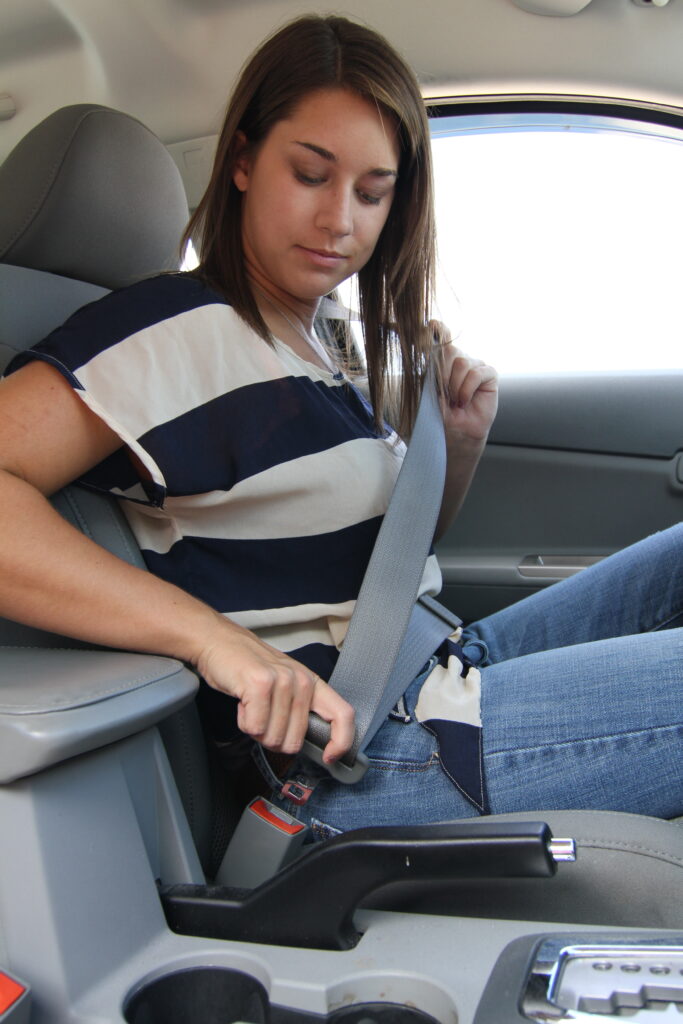
1. **The Critical Role of Head Restraints in Vehicle Safety**
Head restraints are far more than just comfortable cushions for your head during a long drive; they are a fundamental component of a vehicle’s comprehensive safety system. Their primary design purpose is to limit the rearward movement of the head during a collision, a function especially critical in rear-end impacts where the force can violently snap the neck. By restricting this movement, properly adjusted head restraints significantly reduce the likelihood of severe neck injuries, effectively acting as your cervical vertebrae’s personal bodyguard.
The effectiveness of a head restraint directly correlates with its precise positioning relative to the occupant’s head. When correctly aligned, with the top of the restraint at least as high as the top of your head and the top of your ears, it can catch the head rapidly during an impact. This swift support minimizes the violent snapping motion of the neck, thereby dramatically reducing the risk of soft-tissue injuries, famously known as whiplash. It’s a subtle mechanism with profound protective capabilities.
It’s crucial to understand the functional distinction between a “head restraint” and a “headrest.” While the terms are often used interchangeably, a head restraint specifically refers to the safety feature engineered to prevent whiplash by limiting head movement in a crash. Conversely, a headrest primarily serves as a comfort feature, providing a place to rest the head. Recognizing this difference is the first step toward utilizing this safety device to its fullest potential, focusing on protection over mere comfort.
Read more about: Challenging Bavaria’s Best: An In-Depth MotorTrend Analysis of the 2025 Genesis GV70’s Stance Against BMW’s Luxury SUV Lineup
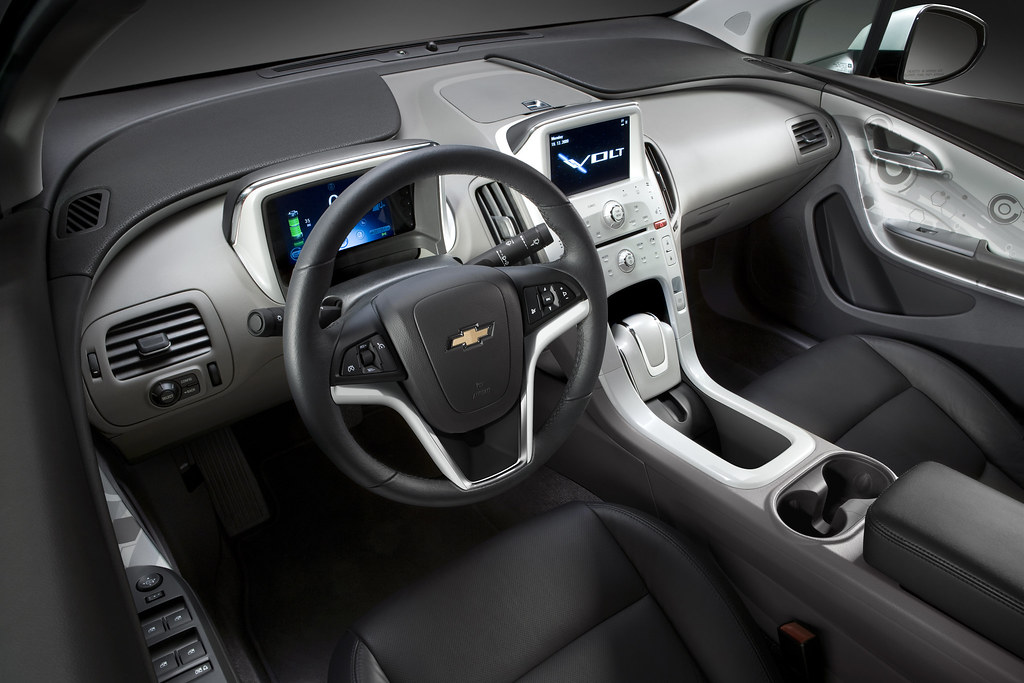
2. **Assessing Your Current Head Restraint Setup**
Many drivers and passengers, perhaps unknowingly, configure their head restraints in a suboptimal position, inadvertently increasing their vulnerability in an accident. A common error involves positioning the restraint too low or too far back, diminishing its capacity to prevent neck injuries effectively. The ideal stance for maximum safety dictates that the top of the restraint should be positioned at least as high as the top of your head, and critically, it should be as close to the back of your head as practically possible.
Several pervasive misconceptions often compromise the safety benefits of head restraints. One significant misunderstanding is prioritizing comfort over safety, leading individuals to adjust the restraint to a lower height or further back than recommended for protective efficacy. Another widespread, yet dangerous, belief suggests that head restraints are only necessary for extended journeys. In reality, a substantial number of accidents occur close to home, underscoring the constant necessity for proper adjustment irrespective of travel distance.
The repercussions of incorrect head restraint adjustment extend beyond diminished safety to impact driving comfort. A head restraint set too low dramatically amplifies the forces exerted on the neck during a collision, which can result in severe injuries. Conversely, if it is positioned excessively high, it loses its ability to provide adequate support to the head. Furthermore, an improperly adjusted head restraint can induce discomfort during normal driving, especially during prolonged periods, by compelling the neck into an unnatural and strained posture.
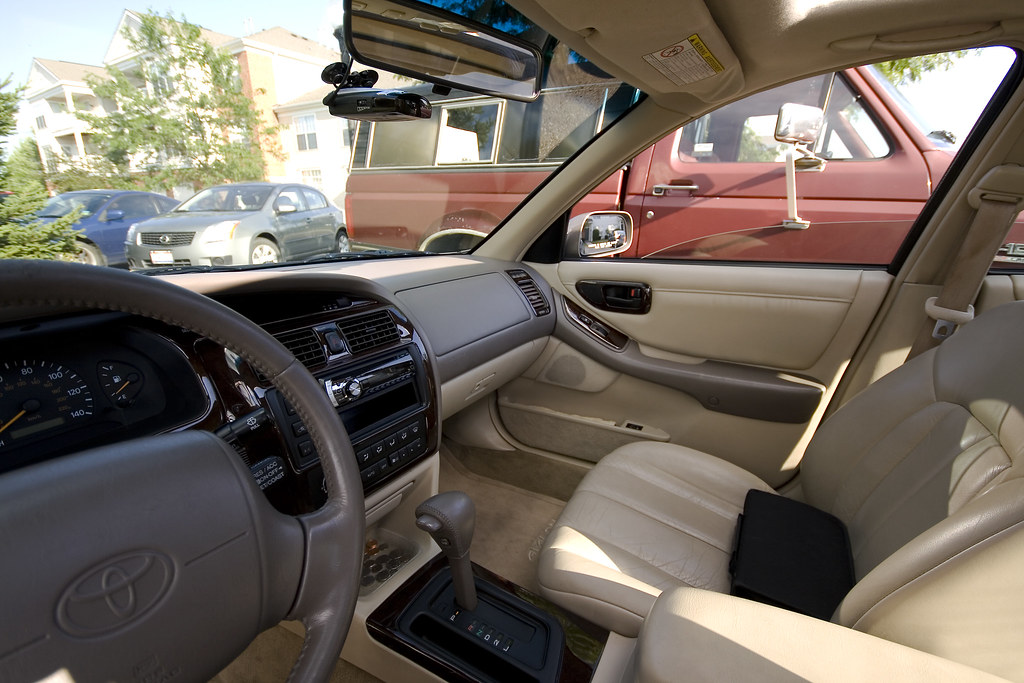
3. **A Step-by-Step Guide to Proper Head Restraint Adjustment**
Knowing when to adjust your head restraint is as crucial as knowing how. It’s imperative to re-evaluate and adjust your head restraint whenever there’s a change in your seating position, or if another driver with a different driving posture has used the vehicle. Moreover, it’s a sound practice to verify the adjustment if you’ve had passengers in the back seat, as their settings might vary. Even minor alterations in seat adjustment can necessitate a corresponding change in the head restraint’s position to maintain optimal safety.
To ensure your head restraint is set up for maximum protection, follow these detailed steps carefully. First, sit in your normal driving position, ensuring you are comfortable and that your back is flush against the seat back. Next, locate the head restraint adjustment mechanism; most restraints can be moved up or down, often requiring a button press to unlock the mechanism. The critical step is to align the head restraint so its top is level with the top of your head, as this maximizes head support during an impact.
Once the vertical alignment is correct, focus on the distance from your head. Ideally, the head restraint should be as close to the back of your head as possible, with an optimal distance of no more than 6 centimetres (approximately 2.5 inches). If your head restraint allows for forward and backward adjustment, utilize this feature to minimize the gap. Finally, recline slightly and double-check the alignment to ensure it remains proper as you naturally sit, confirming that the restraint is truly integrated with your posture for peak safety.
Read more about: Customizers Be Wary: 14 Types of Paint Jobs You Should Seriously Think Twice About Choosing for Your Ride
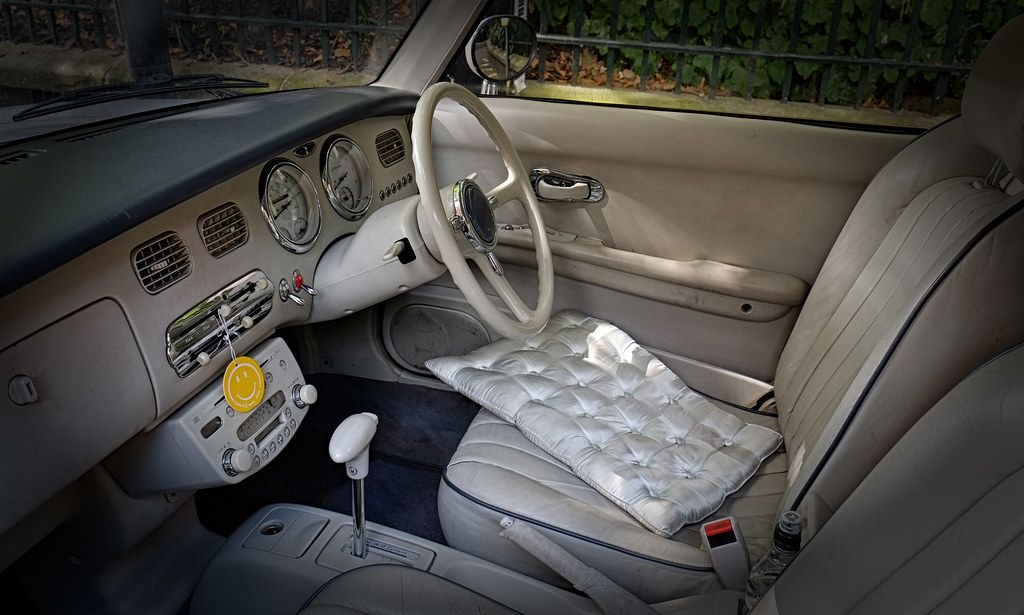
4. **Special Considerations for Vehicle Types and Older Models**
The procedure for adjusting head restraints can exhibit slight variations depending on the vehicle type, particularly between cars and SUVs, primarily due to inherent differences in seat design and overall vehicle height. SUV seats, for instance, are generally positioned higher, which often necessitates a higher adjustment of the head restraint compared to standard cars. Regardless of the specific vehicle type you operate, the guiding principle remains constant: always ensure the restraint is in its optimal protective position relative to your head.
Older vehicle models frequently present unique challenges because they may feature head restraints that are non-adjustable, or their range of adjustment is severely limited. In such scenarios, it becomes essential to critically evaluate the safety implications posed by these limitations. If the existing setup offers inadequate support, it is advisable to research aftermarket solutions specifically designed to enhance head support and protection. Prioritizing safety should always be paramount, and investing in upgraded, adjustable restraints could be a wise decision.
For vehicles equipped with non-adjustable head restraints, certain proactive measures can be taken to enhance safety. Firstly, experimenting with the seat adjustment, such as altering the seat angle or position, might help bring your head into closer alignment with the fixed restraint. Secondly, if permitted by safety regulations and guidelines, consider incorporating specially designed cushions that effectively reduce the gap between your head and the restraint. Should a fixed head restraint remain significantly misaligned, consulting a vehicle modification expert to explore bespoke customization options for improved safety is a prudent course of action.
Read more about: The Ultimate Off-Road Showdown: 2025 Ford Bronco vs. Land Rover Defender Face-Off
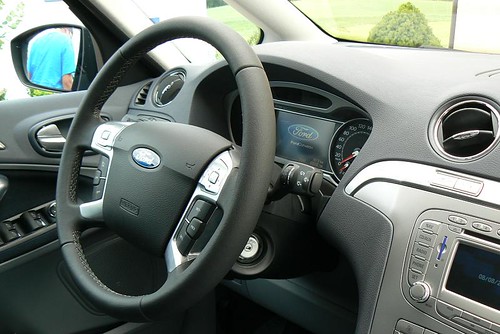
5. **Head Restraints and Driving Test Requirements**
In many jurisdictions, including the UK, the importance of properly adjusted head restraints is explicitly underscored by official regulations, such as The Highway Code. This foundational document emphasizes that head restraints are a critical element of vehicle safety, mandating their correct adjustment to fit the morphology of both the driver and passengers. This ensures the minimization of neck injury risk in the unfortunate event of a collision, making compliance not only a best practice for safety but also a legal requirement under national road laws.
For those preparing for their driving test in the UK, the ‘Show Me, Tell Me’ section provides a practical opportunity to demonstrate knowledge and hands-on skills concerning vehicle safety checks, which explicitly include head restraint adjustments. Candidates may be asked to articulate or physically demonstrate the correct method for adjusting a head restraint. This segment serves as a crucial assessment, allowing learners to exhibit their understanding of the functionality and paramount importance of proper adjustment for safe and responsible driving practices.
Beyond educational contexts, head restraint compliance undergoes practical assessment during the actual driving test. Examiners diligently verify that the head restraint is correctly set to the appropriate height and position in relation to the driver’s head and neck. This meticulous evaluation forms an integral part of the overall assessment, contributing to the determination of a candidate’s readiness to operate a vehicle safely and responsibly on public roads. It’s a clear signal that this seemingly minor adjustment holds significant weight in the eyes of road safety authorities.
Read more about: Tesla Model 3 vs. 2025 Nissan Leaf: An Expert Comparative Analysis for the Savvy EV Driver
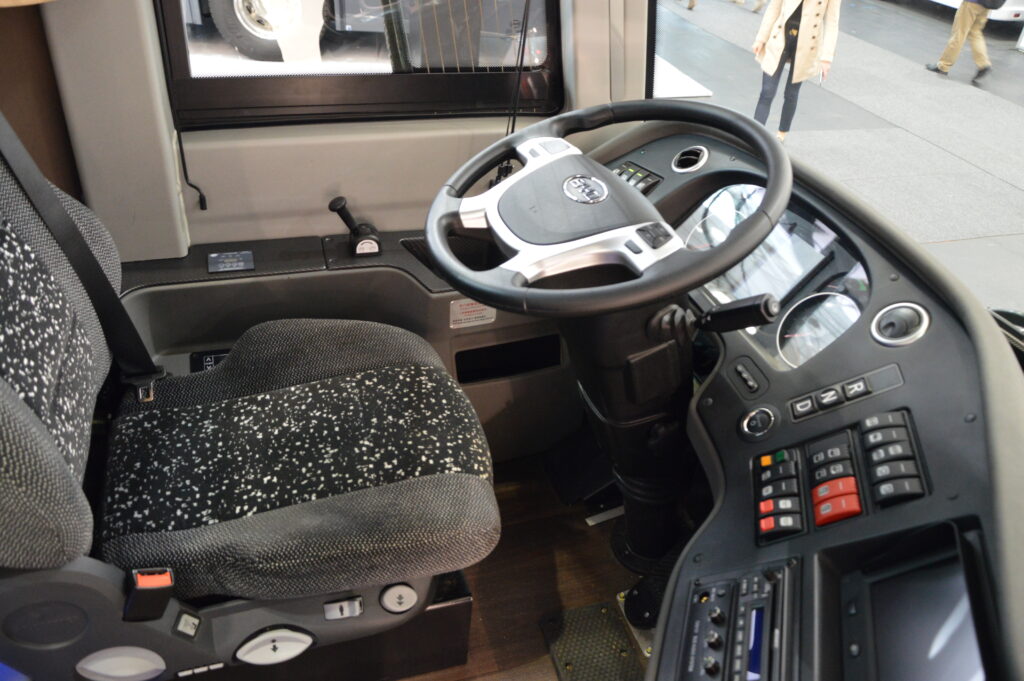
6. **Maintaining and Upgrading Your Head Restraints**
Regular and diligent checks are indispensable for ensuring that the head restraints in your vehicle consistently maintain their integrity and optimal functionality. This routine maintenance involves a visual inspection of the restraints for any discernible signs of wear or damage, such as fraying fabric or cracks in the plastic. Furthermore, it’s crucial to confirm that they securely lock into their adjusted positions and that they can be moved smoothly up and down without requiring excessive force or exhibiting any noticeable resistance. Integrating head restraint checks into your routine vehicle maintenance schedule is a smart preventive measure.
It is vital to recognize when a problem extends beyond a simple adjustment and warrants professional intervention. If, during your routine checks, you encounter any issues that you are unable to rectify independently – such as a head restraint that fails to remain securely in place, displays clear signs of structural weakness, or is overtly damaged – seeking professional help is imperative. Expert mechanics possess the necessary skills and equipment to accurately assess whether the head restraint requires a repair or a complete replacement, thereby ensuring it continues to deliver the essential protection you rely on.
For vehicle owners with older models or those whose existing head restraints offer insufficient adjustability, considering an upgrade can substantially bolster safety. When exploring new options, prioritize modern models or aftermarket products that strictly adhere to current safety standards. These contemporary designs are engineered to provide superior protection against whiplash and a broader spectrum of neck injuries. When making your selection, always verify that the chosen head restraints are fully compatible with your vehicle’s specific make and model, and that they meet all pertinent regulatory standards for maximum peace of mind.
Read more about: 8 Pickup Trucks That Excelled in Rollover Tests: A Deep Dive into Vehicle Safety

7. **The Debilitating Impact of Whiplash Injuries**
Whiplash is a prevalent and often profoundly debilitating injury that typically arises when the head experiences a sudden, forceful jerk forward and then backward, most commonly during a car accident. This violent motion can precipitate a cascade of distressing effects, including intense neck pain, pervasive stiffness, and significantly reduced mobility. In more severe or prolonged instances, individuals may unfortunately contend with chronic pain and discomfort, which can substantially impair their overall quality of life and daily functioning.
Sudden rear-end collisions stand out as one of the most frequent culprits behind whiplash injuries. The abrupt and forceful transfer of energy causes the head and neck to move with extreme velocity, stretching and damaging the intricate network of muscles, tendons, and ligaments within the neck. Beyond just the immediate mechanical injury, direct damage can occur to specific neck muscles, notably the sternocleidomastoid and semispinalis, often triggered by a reflex muscle activation in response to the impact.
The severity and likelihood of whiplash are unfortunately exacerbated by improperly adjusted headrests. When a headrest fails to provide adequate support during a collision, the head’s uncontrolled backward movement becomes more pronounced, intensifying the strain on the neck. Medical observations have further substantiated the physiological impact, with elevated levels of the enzyme creatine kinase—a reliable marker for muscle injury—being recorded in whiplash patients within 24 hours post-collision. Therefore, correctly adjusting your head restraint serves as a critical defense against the potentially devastating effects of whiplash, playing a crucial role in safeguarding your neck and overall well-being.
Read more about: Navigating the Red Flags: Why Your Car Insurance Claim Might Be Investigated for Fraud (and What to Know!)
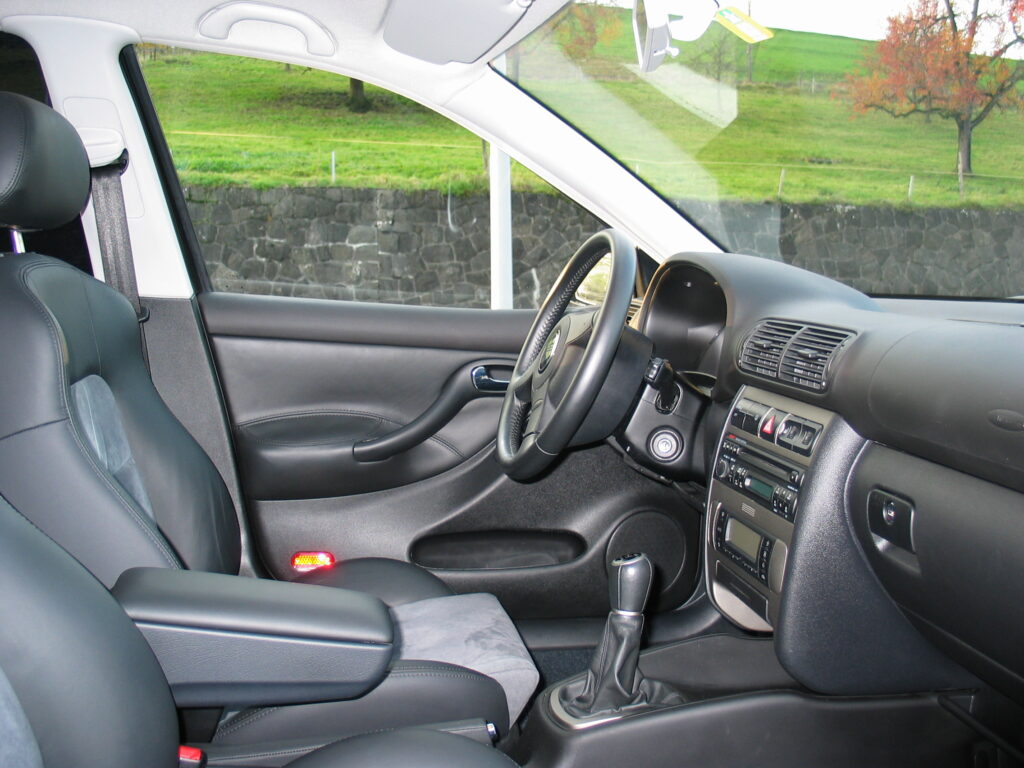
8. **The Synergy of Seatbelts and Innovative Seat Design**
Beyond the head restraint, a vehicle’s seatbelts and innovative seat design are equally critical partners in forming a comprehensive safety system. These components work in tandem, providing a layered defense against the forces unleashed during a collision, dramatically reducing the potential for serious injury, including whiplash. Understanding how these elements interact is key to maximizing overall occupant protection.
Proper seatbelt usage is fundamental to this protective synergy. The lap belt should be snugly secured across the hips, never riding up onto the stomach, to distribute impact forces effectively. Simultaneously, the shoulder belt must rest across the chest and shoulder, avoiding the neck or face, to prevent dangerous forward or sideways body movement. Many unfortunately adjust the shoulder belt behind their back for comfort, a practice that severely compromises its ability to protect in a crash.
The design of the seat itself plays a substantial role in protecting against injury. Studies indicate that seats featuring softer, more pliable designs offer superior protection against whiplash. Such seats can effectively absorb the energy of a rear-end collision, cushioning the occupant’s body. In stark contrast, stiffer seats, often found in high-performance sports cars, may cause the occupant’s shoulders to rebound violently, increasing injury risk.
Modern seat designs are often engineered with sophisticated movement or sinking mechanisms. These features are specifically designed to work in conjunction with both head restraints and seatbelts, transforming the entire seat into an active whiplash-prevention device. This coordinated movement significantly reduces the sudden back-and-forth motion of the occupant, thereby mitigating the abrupt head and torso movements that are primary causes of whiplash.
When it comes to children, specific seat design considerations are paramount. Rearward-facing seats offer superior protection against neck injuries for as long as possible. For front-facing seats, the inclusion of adjustable headrests is crucial to ensure correct positioning as a child grows. Additionally, it is vital to ensure that a child’s head cannot fall back into any slots cut into the seatback, which are sometimes present for improved rearward visibility, as this can create a dangerous vulnerability.
Read more about: Driving Innovation: A Deep Dive into the 2025 Mercedes-Benz C-Class Tech Upgrades
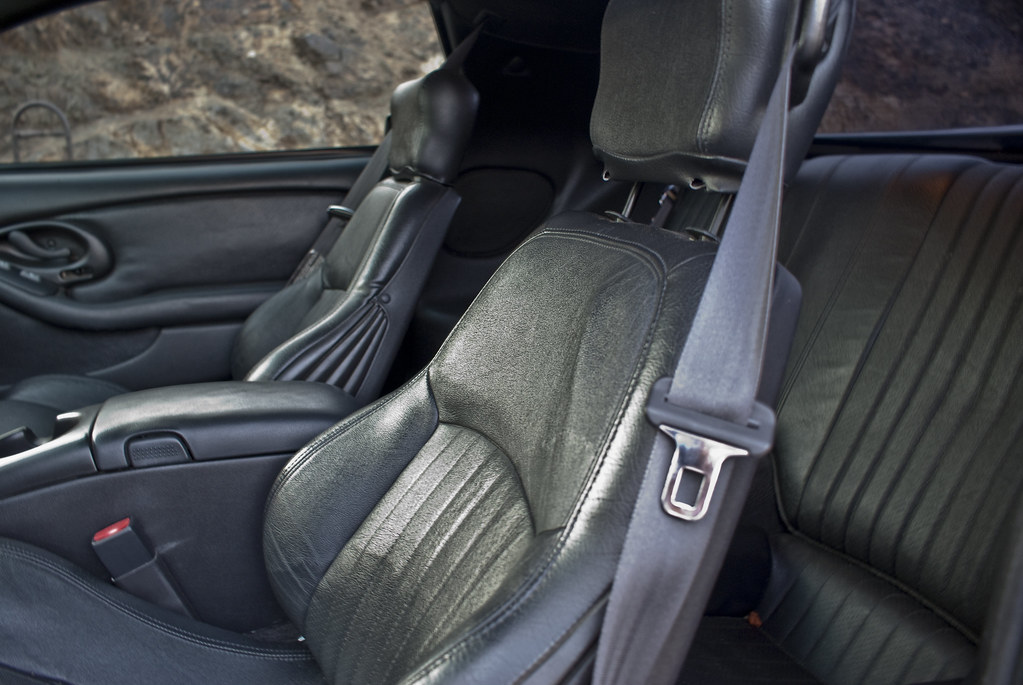
9. **Optimizing Your Seat Position for Maximum Protection**
Your individual seat position within the vehicle is a fundamental, yet often overlooked, factor in comprehensive safety, particularly concerning whiplash prevention from behind. This goes far beyond mere comfort, acting as a direct interface between your body and the vehicle’s protective systems. Achieving the optimal seat position ensures these safety features can perform as intended.
The type of seat and its adjustability are crucial considerations. Modern vehicles typically offer a range of adjustments, allowing for customization to individual needs and body types. As previously noted, softer seats are generally more effective at protecting against whiplash because they can absorb the impact of a collision. Stiffer seats, conversely, can cause the occupant’s body to bounce off them, potentially leading to injuries. Furthermore, seats designed to allow occupants to sink deeper during a collision can actively help prevent whiplash by reducing head and torso movement.
The head restraint remains a critical component integrated into the seat’s overall design. It must be adjusted to the correct height to provide effective protection. Ideally, the top of the head restraint should align with the top of your head or, at the very least, with the top of your ears. This precise vertical alignment ensures the head restraint can adequately catch and support the occupant’s head during a rear crash, preventing excessive backward movement.
Moreover, the horizontal distance between the head restraint and the back of your head should be minimized, ideally no more than 4 inches (approximately 10 cm). Achieving this close proximity is crucial for maximizing protection. Adjusting the recline angle of the seatback can help ensure your head is as close to the head restraint as possible. Similarly, careful adjustment of the seat’s height and distance from the steering wheel is necessary to ensure the head is optimally protected without being positioned too close to the airbag, maintaining a delicate balance for overall safety.
Read more about: Beyond the Daily Commute: A Deep Dive into the 2025 Acura MDX’s Long-Distance Comfort and Capability

10. **The Advantages of Dynamic Head Restraint Systems**
While manual head restraint adjustments are vital, advancements in automotive safety have introduced dynamic restraint systems, often referred to as active head restraints. These innovative systems represent a significant leap forward in whiplash prevention, offering an enhanced layer of protection that goes beyond static positioning. They actively anticipate and respond to collision forces.
These dynamic systems operate by automatically adjusting with changes in seat position or, critically, deploying during a crash. Unlike traditional adjustable head restraints that rely solely on occupant setup, dynamic systems utilize the entire seat architecture as an integrated whiplash-prevention device. This proactive approach ensures optimal support precisely when it’s needed most.
In the event of a sudden impact, the seatback, working in conjunction with the dynamic head restraint, cradles and supports both the head and torso. This comprehensive support dramatically reduces the abrupt motion of the head and torso, which is the primary mechanism causing whiplash. The result is significantly improved protection against neck injuries compared to systems that do not offer automatic adjustment or active deployment.
For vehicles equipped with these advanced systems, it is still crucial for owners to follow the manufacturer’s specific recommendations. While dynamic head restraints offer automated advantages, understanding their operational parameters and any recommended maintenance ensures their continued effectiveness. This ensures the technology can deliver its full potential in safeguarding occupants.
Read more about: Unleashing the Soul of Driving: What the 2025 Mazda MX-5 Miata Offers True Purists
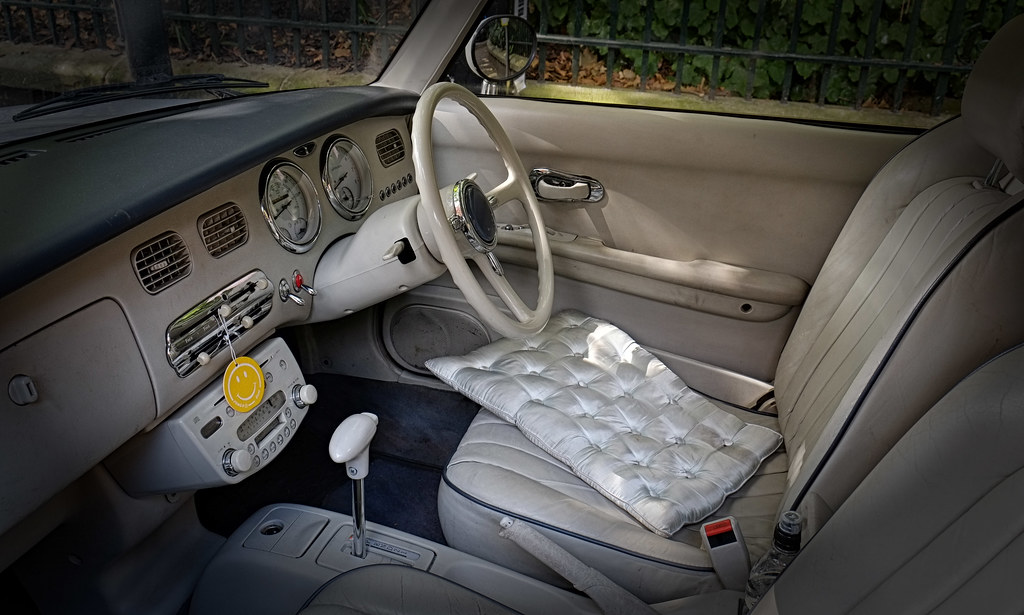
11. **Top-Rated Vehicles for Superior Head Restraint Systems**
Choosing a vehicle with excellent safety features, particularly superior head restraints, is a proactive step toward protecting occupants from whiplash. The Insurance Institute for Highway Safety (IIHS) conducts rigorous testing and provides invaluable ratings that empower consumers to make informed decisions about vehicle safety. Their assessments highlight which models offer the best protection against neck injuries.
Among small and midsize cars, several models have consistently earned top ratings for their head restraints. These include the Honda Civic and Honda Insight, the Mazda 3, and the 2021 Subaru Crosstrek. In the midsize car category, the Honda Accord, Kia K5, Mazda 6, Nissan Altima and Maxima, Subaru Legacy and Outback, and Toyota Camry are recognized. The Ford Mustang also demonstrates strong performance in head restraint safety within this class.
For those seeking luxury or larger sedans, top-rated midsize luxury cars include the Acura TLX, Lexus ES 350 and IS, Mercedes C-Class, Tesla Model 3, and Volvo S60 and V60. In the large car segment, the Kia Stinger stands out, alongside large luxury cars such as the Audi A6 and A7, Genesis G70, G80, and G90, and the Volvo S90, V90, and V90 Cross Country, all offering robust head restraint protection.
Moving to SUVs, the small SUV category features top performers like the Chevrolet Trailblazer, Ford Bronco, Hyundai Tucson, Mazda CX-3, CX-30, and CX-5, Mitsubishi Outlander, Nissan Rogue, Subaru Forester, and Volvo XC40. Midsize SUVs with high ratings include the Ford Explorer, Hyundai Palisade and Santa Fe, Mazda CX-9, Nissan Murano, Subaru Ascent, Toyota Highlander, and the Volkswagen ID.4, providing excellent options for family safety.
Finally, for midsize luxury SUVs, the Acura MDX and RDX, Audi Q5, Cadillac XT6, Genesis GV70 and GV80, Hyundai Nexo, Lexus NX, Mercedes GLE-Class, Tesla Model Y, and Volvo XC60 and XC90 are all highly recommended for their advanced head restraint systems. For individuals considering a used vehicle, the IIHS website at www.iihs.org offers a comprehensive search function to check the safety ratings of head restraint systems for specific makes and models, ensuring continued vigilance in vehicle safety.
Read more about: Your Definitive Guide to the Safest Family Vehicles of 2025: Top Models Earning Highest Safety Ratings
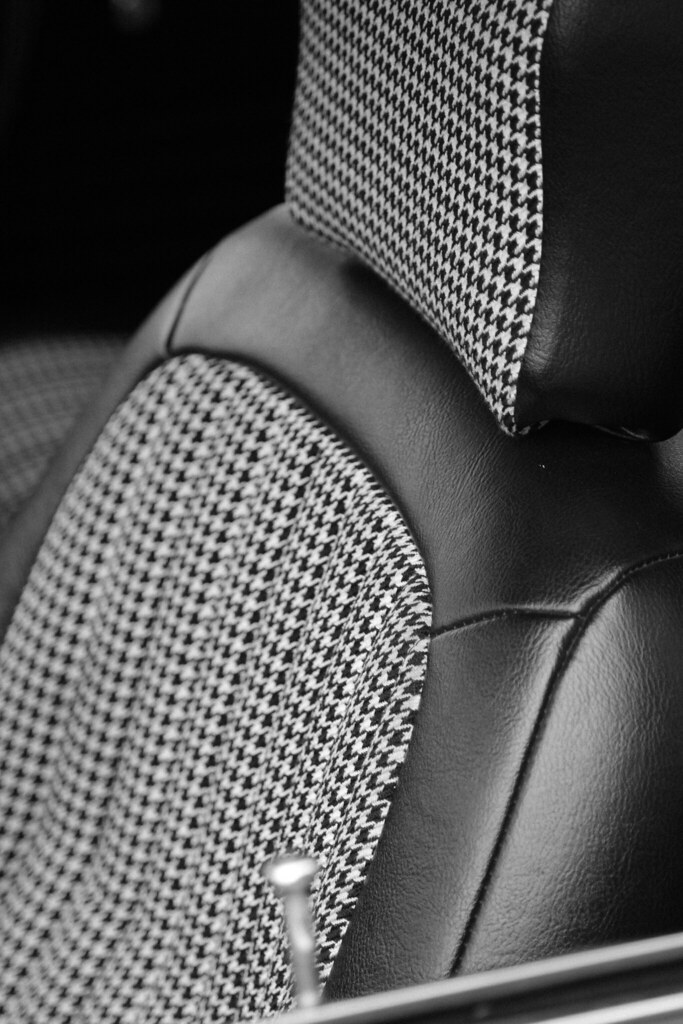
12. **Educating Others: Fostering a Culture of Safety**
Effective education is the cornerstone of fostering a widespread culture of safety, especially concerning crucial yet often overlooked vehicle components like head restraints. Equipping new drivers with proper knowledge and habits from the very beginning of their driving journey is paramount. This initial instruction sets the foundation for a lifetime of safer driving practices.
Driving instructors and driving schools bear a significant responsibility in this educational endeavor. Their curriculum should include detailed, hands-on instructions on how to correctly adjust head restraints, emphasizing that these are critical safety features, not just for comfort. New drivers should be taught to adjust their head restraint every time they enter the car, treating it with the same importance as fastening their seatbelt.
Creating awareness must extend beyond novice drivers into the broader community. Community health organizations, local government bodies, and even car manufacturers have a vital role to play. Initiatives such as organizing workshops, conducting safety days, and integrating crucial messages into driver’s licensing and renewal processes can be highly effective. Distributing information through local media, social media, and collaborating with insurance companies—who might incentivize proper safety standard maintenance—can amplify reach.
Head restraints are an integral part of overall vehicle safety education and should be highlighted across various formats. This includes comprehensive driver’s education courses, detailed sections in vehicle owner’s manuals, and prominent public safety campaigns. Employers managing vehicle fleets also have an opportunity to incorporate head restraint checks and adjustments into their regular safety briefings. By thoroughly educating people on how proper adjustment significantly decreases the risk of neck injuries, individuals are much more likely to prioritize and implement these essential safety practices.

13. **Frequently Asked Questions About Head Restraint Safety**
To further empower drivers and passengers, addressing common questions about head restraint safety is essential. Understanding the fundamental purpose and correct positioning is key to leveraging this vital safety feature. The primary role of a head restraint is to prevent neck injuries during a collision, particularly in rear-end accidents, by effectively limiting the backward movement of the head. Ideally, the top of the head restraint should be positioned as high as the top of your head, or at least level with your eyes, and should be as close as possible to the back of your head, preferably within 6 centimeters (approximately 2.5 inches).
A common query revolves around comfort versus safety. While head restraints can provide comfort, their main function is to enhance safety by protecting against whiplash and other neck injuries in an accident. Removing head restraints is strongly discouraged, as it significantly increases the risk of serious neck injuries during a crash. Instead, efforts should focus on adjusting your seat or the restraint itself to improve comfort without compromising its protective function. Most modern vehicles feature adjustable head restraints, though some older models or lower-cost cars may have fixed or limited-adjustment types.
Regular checks of your head restraint adjustment are highly recommended. It is good practice to verify the adjustment every time you drive, especially if others have used the vehicle or if your seat position has been altered. For vehicles with non-adjustable head restraints that do not fit well, adjusting the seat angle or position may help. Additionally, using a specially designed cushion to reduce the gap between your head and the restraint can be considered, provided it adheres to safety regulations and does not compromise your driving posture or safety. In many regions, including the UK and EU, legal requirements mandate that vehicles be equipped with head restraints and specify standards for their effectiveness.
Regarding children, head restraints should always be appropriate for their height. While adult head restraints can sometimes be adjusted to fit children, booster seats often come with dedicated head restraints that are better suited. The most effective way to educate others about head restraint safety involves a multi-pronged approach through driving schools, safety workshops, and public awareness campaigns. Including relevant information in vehicle manuals and within health and safety programs in workplaces also contributes significantly to widespread understanding and adoption of safe practices.
Read more about: A Money Pit in Every Drive: 14 Pickup Trucks and the Hidden Pitfalls Owners Regret Most

14. **Your Proactive Role in Comprehensive Vehicle Safety**
As we navigate the complexities of modern driving, it becomes abundantly clear that vehicle safety is a shared responsibility, extending beyond the engineering of sophisticated systems to the proactive engagement of every occupant. While today’s cars are equipped with an array of advanced protective features, their ultimate effectiveness hinges on individual awareness and diligent adjustment—a principle profoundly exemplified by the seemingly simple head restraint.
Optimal protection against injuries like whiplash isn’t a singular adjustment but rather the harmonious synergy of multiple components. This comprehensive approach mandates that correctly adjusted head restraints work in concert with properly fastened seatbelts, an ergonomically optimized seat position, and the inherent safety benefits of innovative seat designs. Each element, when attended to, reinforces the integrity of the entire safety network surrounding you.
Read more about: NWS Extreme Cold Alert: A Comprehensive Consumer’s Guide to Winterizing Your Home and Car for Ultimate Safety and Preparedness
Ultimately, your safety on the road is a narrative you actively co-author. By taking the time to understand, assess, and adjust these crucial components, every driver and passenger transforms from a passive occupant into an active participant in their own well-being. This vigilance in recognizing and optimizing the protective potential of every vehicle component, from the visible seatbelt to the ‘invisible killer’s antidote’ in your head restraint, represents a profound commitment to safeguarding yourself and your loved ones on every journey. This simple commitment can be the critical difference, ensuring peace of mind and protection on the open road.



